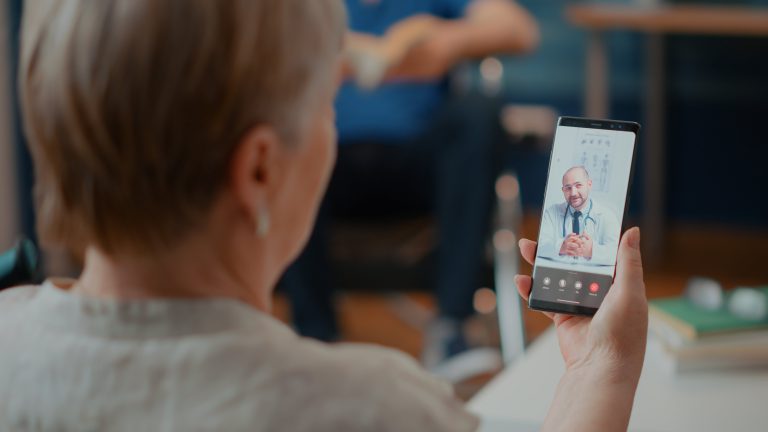Even when they believe it may be necessary, people frequently avoid booking essential doctors’ appointments. According to an Annual GP Survey, more than half of patients who needed an appointment said they had avoided making one in the last 12 months for various reasons. So why do people put off going to see their doctor?
With a median waiting time for treatment of 13.3 weeks at the NHS – significantly higher than the pre-Covid duration – it’s understandable that patients are reluctant to book a doctor’s appointment at their local GPs. Furthermore, one in four patients who needed an appointment said they had avoided making one in the last 12 months as they found it too difficult, with almost a fifth of patients having a negative experience dealing with a receptionist.

Waiting for the GP appointment
NHS waiting times have reached record highs as a result of the continuous strains on existing services, the backlog of care, and ongoing labour shortages. The average waiting time for a non-urgent face-to-face appointment is currently 10 days, while the average waiting time for a remote, non-urgent appointment still stands at 8 days, according to Pulse’s latest GP survey.
Whilst the UK government has set a new goal of providing appointments to patients within 14 days, the NHS hopes the government will develop a credible plan to meaningfully increase NHS hospital capacity and ensure that the NHS is not reliant on private sector capacity in the long-term.
A study from 2018 claims that thousands of people in the UK are neglecting their health and putting themselves at risk of potentially fatal illnesses and other disorders because they are too afraid to attend their GP appointments. The question is what’s the cause of this, and how can the medical profession deal with this more effectively?
Making the visit easier
Early on in the pandemic, telehealth services saw a sharp increase in demand as medical professionals tried to provide secure and efficient healthcare, whilst having to isolate due to Covid. There’s already been an upward trend towards people embracing telehealth apps, but the pandemic accelerated this trend.
The latest research suggests that 55% of people would accept a diagnosis by an app. Since then, telehealth has become increasingly popular, especially in specialties like radiology, and behavioural health. Analysts estimate that by 2028, the market for telehealth will be worth $636 billion worldwide.
There tends to be a correlation between the smartphone adoption rate and the use of telehealth apps. Younger people disproportionately use telehealth apps, whilst the majority of people aged 50 or above don’t use mobile health apps. The reason behind this is convenience, safety (especially during Covid-19 when the risk of infection was high), and being able to ‘jump the queue’ owing to the increased backlog of patients waiting to be treated due to the pandemic.
Owing to constraints associated with video calls, the most common type of virtual consultations are initial consultations. It appears that inflammatory arthritis is the most common medical category. According to a survey carried out in 2021, 78% of respondents agreed that telehealth is more time effective than in-person consultations. Furthermore, 61% believe it provides more accessibility to quality healthcare.
More than half of Brits prefer getting medical advice via video rather than in person. Patients shared that they prefer video calls rather than in-person appointments as it helps them avoid travel and car parking costs and other practical benefits, such as preventing time off work or not having to arrange childcare. They also value not having to wait in outpatient clinics. The majority of respondents said there weren’t any disadvantages to remote consulting.
Patients in full-time paid work or full-time education were the least satisfied with the GP appointment times available to them, indicating that the proposed time would interfere with their working hours, requiring them to book a day off just to attend their medical appointment.
Keeping interactions to online meetings completely changes the dynamic. Less time is spent travelling or on waiting room couches translates into more time in your schedule to accomplish the tasks you need and want to complete each day.
Age, gender and regional breakdown of telehealth app users
1) Age
Age | Yes | No | Don’t know |
18 – 24 | 51% | 33% | 16% |
25 – 49 | 60% | 30% | 10% |
50 – 64 | 54% | 34% | 12% |
65+ | 42% | 49% | 9% |
The age group that’s most likely to use a virtual appointment for any health-related consultation is between 25-49 years of age, with 60% of respondents stating that they would rather get medical advice via video call rather than in person. The only age group that wouldn’t prefer virtual appointments is 65+ with only 42% of respondents answering the question with ‘Yes.’
2) Gender
Gender | Yes | No | Don’t know |
Men | 54% | 35% | 11% |
Women | 53% | 37% | 11% |
Both genders are in agreement that they prefer to have doctor’s appointments conducted virtually rather than in person.
3) Regions
Region | Yes | No | Don’t know |
London | 53% | 35% | 12% |
Rest of South | 56% | 35% | 9% |
Midlands | 54% | 36% | 10% |
North | 51% | 37% | 12% |
Scotland | 50% | 37% | 13% |
Wales | 54% | 34% | 12% |
As many as 56% of respondents from the rest of South would prefer to see a doctor virtually instead of in person, making it the most telehealth friendly region in the UK. On the other hand, Scotland has the lowest percentage of people preferring to have a video call with their GP instead of seeing them in person.
Overall, the majority of residents (53%) of the listed regions in the UK prefer getting medical advice via video rather than in person.
The most popular telehealth apps on the market
Unsurprisingly the National Health Service app is the most popular telehealth app in the UK with an estimated 22m users, or around a third of the entire population. However, uptake remains strong, with 30m downloads recorded in England alone by the third quarter of 2022. This suggests the number of users for this app will continue to increase.
This is only matched by the NHS COVID-19 app, sometimes referred to as the ‘track-and-trace’ app, which had nearly 30m downloads prior to the end of 2021. Nevertheless, it’s difficult to find an accurate number of actual users, owing to regular changes to government policy and public sentiment.
Within the private sector, a few telehealth apps can be viewed as market leaders when taking into consideration the number of users and downloads.
1) Booking GP appointments and repeat prescriptions
With over a million downloads on app stores, the ‘myGP’ and ‘Patient: Access’ apps are the most popular telehealth apps when it comes to managing patient and medical professional relationships.
2) Online medical consultations
With over a million downloads as well, Livi is the most popular UK telehealth app when it comes to seeing a medical professional. A reason behind its popularity is that it’s the first digital healthcare provider to be awarded an “outstanding” rating by the Care Quality Commission (CQC), the UK health regulator. This is an accolade held by only 5% of GP practices and patients are only expected to wait 30mins.
But taking a more global perspective, Teledoc Health, owned by the New York stock exchange listed Teledoc Inc, is by far the most widely used telehealth app on the market, with an estimated 92m users and active in over 130 countries. Teledoc treats a wide range of non-urgent conditions, ranging from mental health to skin conditions.
Concluding thoughts
“Owing to long NHS waiting times and the healthcare system’s relatively inflexible appointment system, UK residents have been actively seeking out credible alternatives. The advent of telehealth apps has been a real game changer for British patients.
With NHS capacity already under strain due to the pandemic and an aging society, telehealth apps can both reduce the burden on the public healthcare system, by reducing the number of non-urgent on-site medical appointments, and also enable the early detection of potentially serious medical conditions over the internet.
As people’s circumstances and attitudes towards online consultations change, telehealth services should be considered an alternative to regular doctors visits, when it comes to non-urgent conditions. This trend should result in the positive outcome of freeing up much needed NHS capacity; therefore, individuals with serious medical conditions can be seen by specialists more quickly.”

Image used in this article can be found here.

